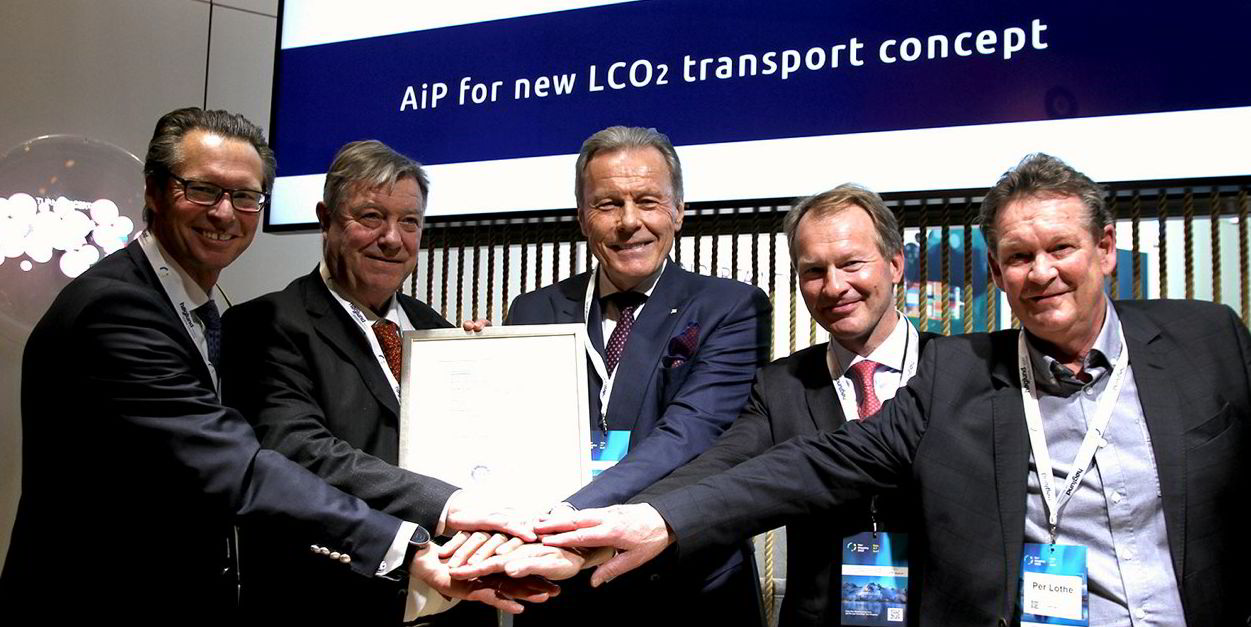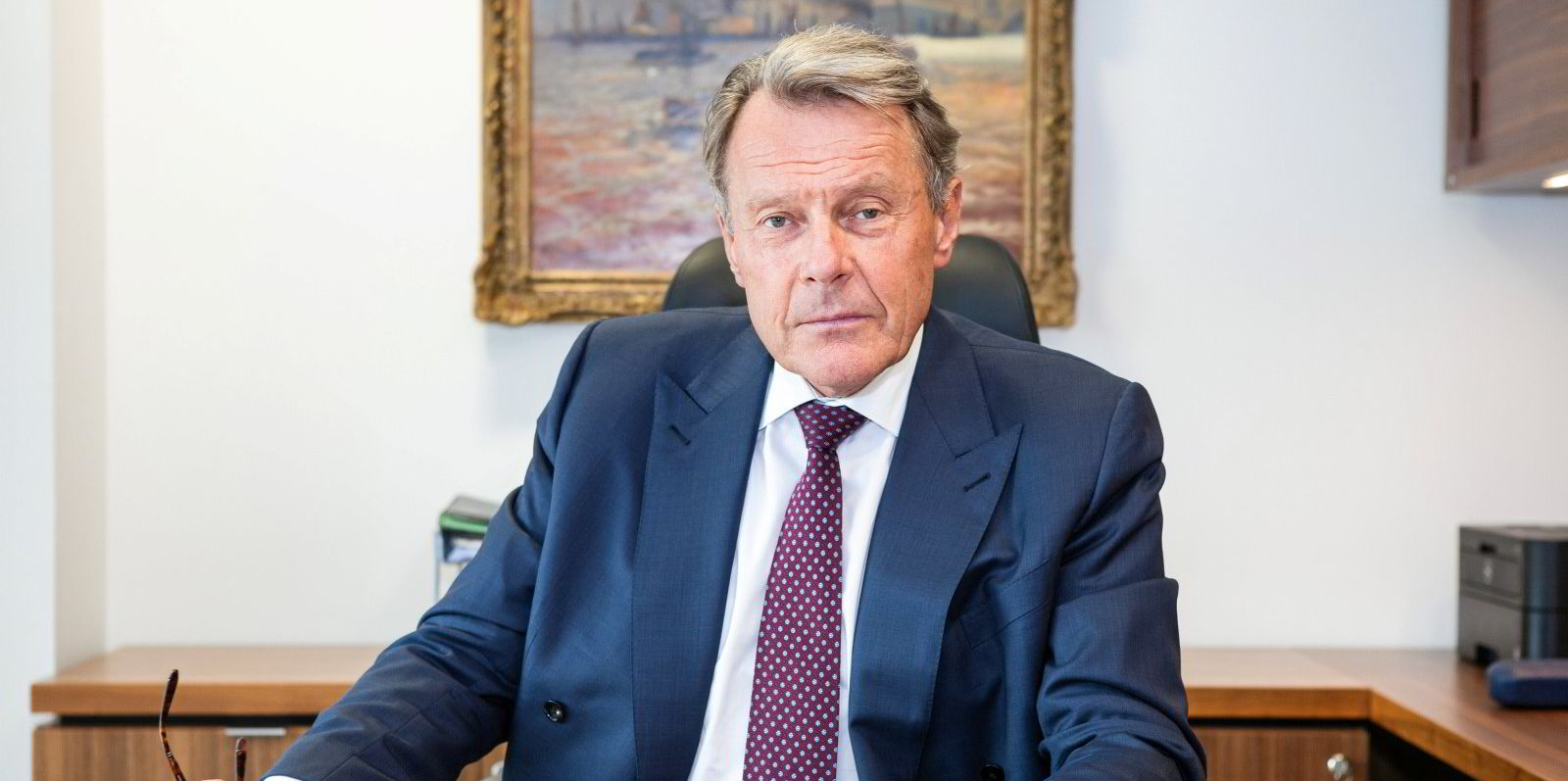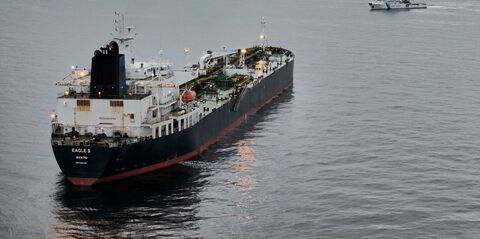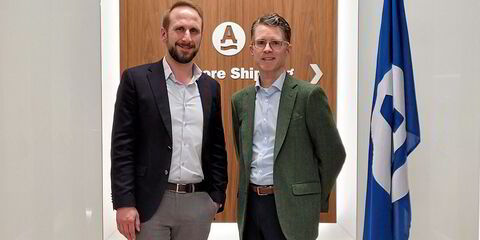Trygve Seglem and Svein Steimler’s ambition to be among the first movers shipping CO2 has taken a step forward with approval in principle for design plans for their ships.
Both are now urging politicians to take steps to create a market by incentivising carbon capture and storage (CCS) as a key strategy to help decarbonise industry.
DNV said this week that it has given approval in principle for a new pressurised tank system being designed for ships planned by Knutsen NYK Carbon Carriers (KNCC).
The company is a 50:50 joint venture between Seglem’s Knutsen group and Japanese shipping giant NYK, where Steimler is chief executive of its European arm.
“We see this as a market that has huge potential to help the world decarbonise industry fast,” Steimler told TradeWinds this week. “But now politicians need to step up and give industry the incentives to fast-track CCS. It is shocking that progress has been so slow.”
KNCC’s tanks comprising vertical cylinders will carry the gas at a near ambient temperature, but under high pressure, adapting methods developed by Knutsen used in compressed natural gas transport.
Knutsen is the world’s biggest shuttle tanker operator and has another long-standing joint venture with NYK, Knutsen NYK Offshore Tankers (KNOT). KNCC intends to retrofit existing vessels at the start, but will be able to scale the technology rapidly.
Seglem said the concept has great potential to scale in the same manner as LNG over the past 20 years but needs a regulatory push to stimulate cargo movements. Having taken oil and gas out of Norwegian offshore oilfields, now is the time to reinject CO2 into the wells.
Several early CCS projects are already operating and planned, although development has yet to meet expectations.
NYK’s Japanese rival Mitsui OSK Lines has a CO2 shipping project with Malaysia’s Petronas, and plans to build a test ship. MOL is already actively involved in the liquefied CO2 transport business through its investment in Norway’s Larvik Shipping, which has been engaged in the trade for 30 years.
“Governments are looking to store CO2 in dormant oilfields. And we have got the shuttle tankers with the dynamic positioning operation which will be required to put the CO2 back where it belongs,” Steimer told TradeWinds when KNCC was launched in January this year.
European Union targets to halve emissions by 2030 mean reducing CO2 in the atmosphere by 750m tonnes per year.
KNCC chief executive Anders Lepsoe said the company has identified older shuttle tankers under the control of sister companies that would be candidates for conversion, although no commitments have yet been made.
Lepsoe, a former DNB banker and executive with Norway’s Westal-Larsen, was recruited to lead the company from launch.
He said the approval in principle is an important technical and commercial milestone as part of a constructive collaboration with DNV.
“KNCC is now prepared to take the next step with the PCO2 technology into this emerging shipping segment. Further, our ability to form an integral part of the CCS value chain, and by that contributing to reach global climate goals, is essential both to our owners and KNCC.”
Knut Orbeck-Nilssen, chief executive of DNV Maritime, said: “We would like to thank KNCC for placing their trust and confidence in DNV as the class partner of choice for this exciting new project.
“The combination of experience, expertise and the validation offered by DNV rules really represents the best of all worlds when it comes to developing new concepts to tackle the challenges of today.”




